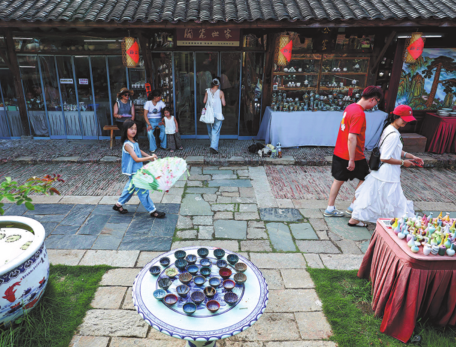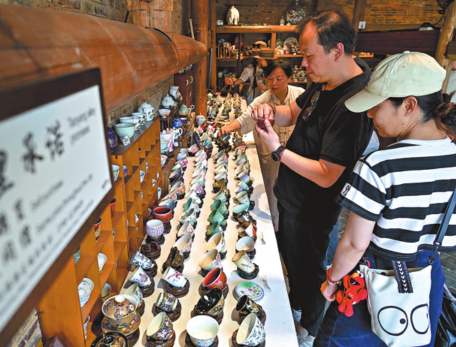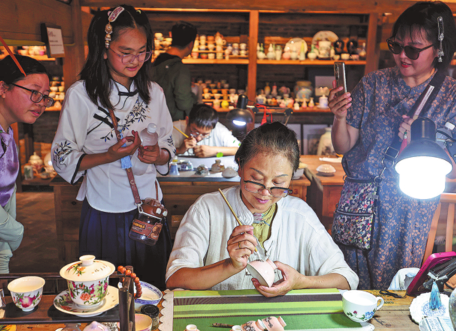Firing up a precious legacy
Porcelain kilns and artifacts from a bygone era testify to an impressive restoration of the ceramic capital

Stepping into Taoyangli feels like entering a thousand-year dream dominated by porcelain. Mottled kiln bricks, winding ancient lanes, and the rekindled glow of kiln fires welcome visitors to the heart of China's ceramic capital, Jingdezhen in Jiangxi province.
Spanning about 600,000 square meters, the area is an integral part of Jingdezhen's porcelain heritage. It safeguards precious remnants of the ceramic industry over centuries. Yet, as industrial ceramic production flourished, Taoyangli and the traditional craftsmanship it symbolized declined. Kilns were abandoned, historic buildings decayed, infrastructure lagged, and the district faded.
In recent years, local authorities have launched an integrated, systematic restoration. Guided by the principle of "protection first, repair the old as they were", Taoyangli, comprising the remnants of the Imperial Kiln Factory, the kilns serving the royal courts of the Ming (1368-1644) and Qing (1644-1911) dynasties, and old workshops used by ceramic artisans, is being built with a vibrancy combining tradition and modernity.
The restoration of the area began over a decade ago with the repair of the late Ming Dynasty Xujia Kiln. It's the largest wood-fired kiln still in existence, and was used to produce household porcelain. Reignited last June, it has produced thousands of porcelain pieces.
To date, more than half of its ancient and early modern residences have been restored, and tens of lanes revitalized.
The Taoyi Shangnong Hotel, a former workshop combining commerce, residence and production and dating back to Ming and Qing dynasties, now thrives as a vibrant cultural and commercial space. Many restored homes and kiln buildings now house artisans' studios and livestreaming bases, injecting contemporary energy.
Entering through the area, visitors encounter the Dragon Pearl Pavilion, Imperial Kiln Museum, and kiln workshops, intertwined with lane homes, guildhalls and porcelain shops, creating a complete porcelain civilization ecosystem.
Centuries-old kiln bricks, salvaged and repurposed, adorn walls and lanes alongside replicas, crafting a district steeped in porcelain charm. Even the avant-garde Imperial Kiln Museum, a new architectural icon inspired by traditional egg-shaped kilns, incorporates 900,000 old kiln bricks.
The kiln fires of Taoyangli burn brightly once more. Its ancient lanes, carefully preserved yet dynamically renewed, stand as a testament to Jingdezhen's enduring legacy and its vibrant future, where history and modernity coalesce in the enduring art of porcelain.
Last year, more than 400 themed events, including temple fairs and the kiln opening festival were organized at Taoyangli, which attracted more than 5 million visitors.








Today's Top News
- China warns Japan against interference
- Nation's euro bond sale shows investors' confidence
- No soft landing for Tokyo's hard line
- Commerce minister urges US to increase areas of cooperation
- Strong demand for China's sovereign bonds signals global confidence
- Ministry urges Japan to 'maintain self-respect'






























